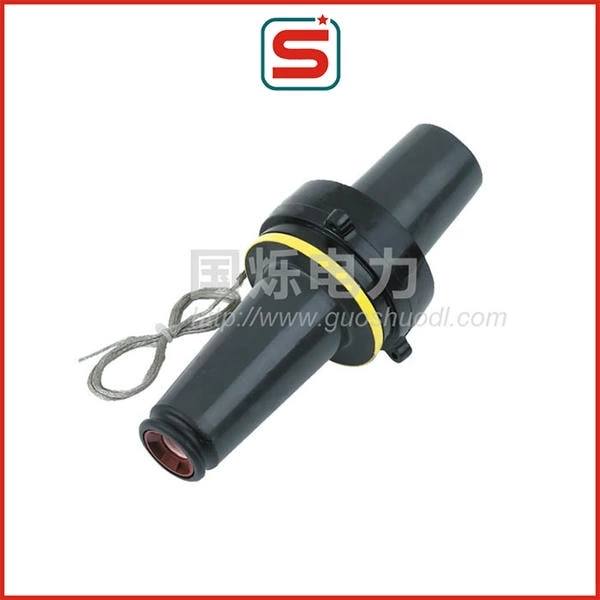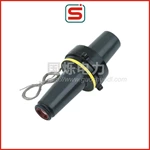Single-pass Sleeve Connector
- Application:
- Cable Terminal
- Transport Package:
- Carton
- Specification:
- 24KV-630A
- Origin:
- China
- Voltage:
- 24kv
Application
The front plug (bolted connection) of the detachable connector is used to connect the polymer insulated cable to the equipment (such as transformer, switchgear, branch box, generator set , etc.)
Technical characteristics
Excellent internal and external shielding design, surface shielding resistance less than 5000Ω , with a certain thickness of conductive shielding layer to fully ensure the safety of operators when contacting; The equipment is fully insulated, fully shielded, fully sealed, touchable and has excellent electrical performance.
Each detachable plug-in head has passed the AC withstand voltage test before leaving the factory.
Cable characteristics
-Polymer insulation (XLPE, ERP)
-Copper and aluminum conductors
-With semi conducting or metal shielding
Production Introduction
A cable separable connector, also known as a separable insulated connector or separable connector, is a device used to connect and disconnect high-voltage power cables. It provides a safe and efficient means of joining and separating electrical cables without the need for specialized tools or equipment. The connector consists of two components: a plug and a receptacle. The plug is attached to the cable, while the receptacle is typically mounted on electrical equipment such as transformers, switchgear, or motors.
Applications of Cable Separable Connectors
Cable separable connectors find applications in various industries where high-voltage power transmission and distribution are required. Some of the key applications include:
-
Power Distribution Networks: Cable separable connectors are extensively used in power distribution networks to connect medium and high-voltage cables to transformers, switchgear, and other distribution equipment. They allow for easy installation, maintenance, and repair of power systems.
-
Renewable Energy Systems: With the increasing adoption of renewable energy sources such as wind and solar power, cable separable connectors play a crucial role in connecting power cables from renewable energy generators to the grid. They enable efficient integration of renewable energy sources into the existing power infrastructure.
-
Industrial Applications: Cable separable connectors are widely used in industrial settings to connect and disconnect power cables for motors, generators, and other equipment. They facilitate quick and safe equipment installation, replacement, and repair, minimizing downtime and improving operational efficiency.
Advantages of Cable Separable Connectors
The use of cable separable connectors offers several advantages over traditional methods of cable connection:
-
Enhanced Safety: Cable separable connectors feature advanced safety mechanisms that minimize the risk of electrical shock during installation or maintenance. They incorporate insulation and sealing components that provide protection against moisture, dust, and other environmental factors.
-
Flexibility and Adaptability: The separable nature of these connectors allows for easy disconnection and reconnection of cables, enabling quick repairs, replacements, or equipment upgrades. They offer flexibility in cable routing and system design, making them ideal for applications that require frequent changes or expansions.
-
Time and Cost Savings: Cable separable connectors eliminate the need for time-consuming and labor-intensive processes such as splicing or soldering cables. They reduce installation and maintenance time, resulting in cost savings for industries.
-
Reliability and Performance: These connectors adhere to stringent quality standards and are designed to withstand harsh operating conditions. They provide excellent electrical conductivity, ensuring reliable power transmission and minimizing energy losses.

